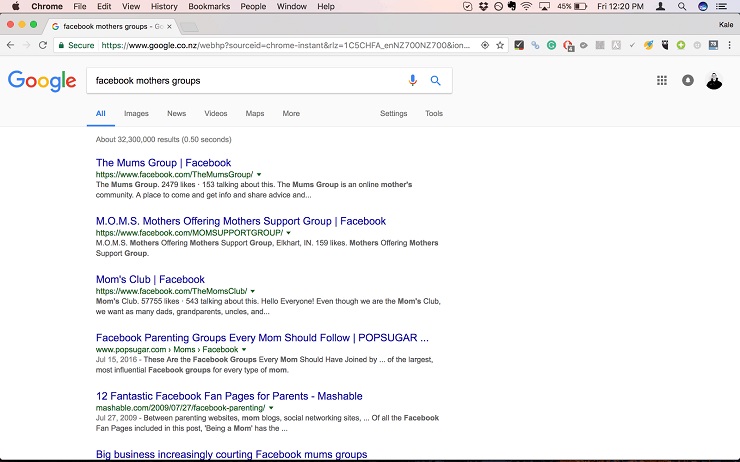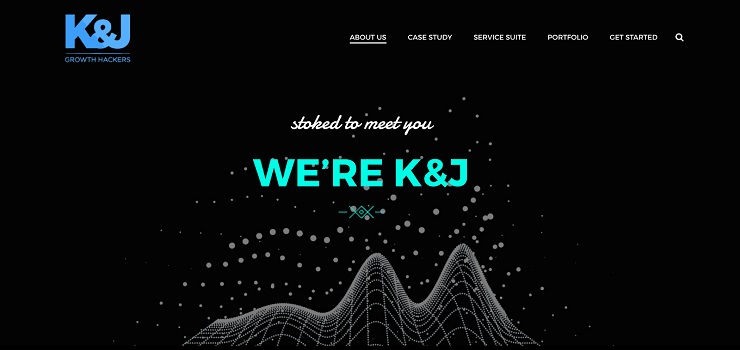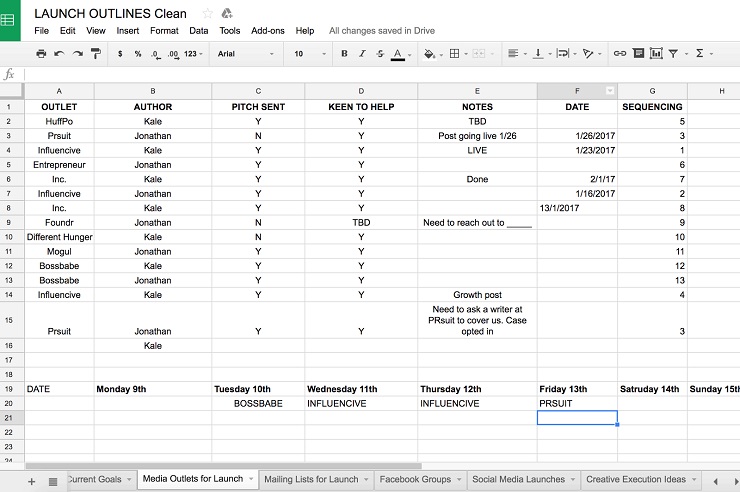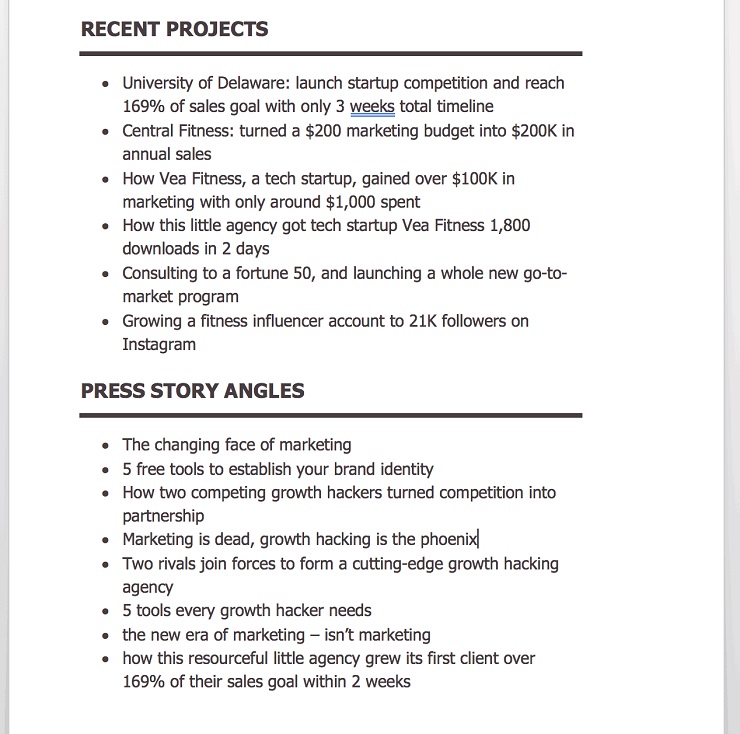We’re living in a golden age of entrepreneurship. As amazing as the opportunities are for new startups, let’s face it, the field is saturated. That means growing your brand and getting it to stand out when you’re just starting out can be so difficult. Sometimes, even if you’re making all the right moves, playing all your cards right, your best efforts will still land with a thud.
There are so many media channels, networks, and most importantly consumers who you want to see your brand, but maybe you don’t want to, or can’t, spend the thousands of dollars required to push your startup into the spotlight. And honestly, sometimes those pricey PR firms or paid advertising channels don’t even yield the results to make it worth the investment.
So what’s a scrappy startup owner to do? We have some advice based on our own experience. At K&J Growth Hackers, my partner Kale Panoho and I received coverage in Inc., Prsuit, Influencive, and Entrepreneur within our first month of operating, and we didn’t spend a dollar.
As with all such turns of events, there was a bit of luck, good timing, and the right connections, but we’re confident that there were a few leverage points that we hit just right that were mostly responsible for that burst of attention we received out of the gate.
We’ll outline here the exact steps we’ve found are most important to defining and growing your brand identity on a tight budget, and then which growth tools we used, and how we landed coverage in top publications, all before even going live.
Talk Nerdy to Me
First, a little about how we landed on our launch outreach strategy. It starts with metrics!
As a second-time founder, I’d spent enough dollars and bruised my ego enough times making “marketing investments” without truly understanding the returns I was likely to get.
After several failed marketing experiments, I started getting obsessive about the link between activities and results. I had tried direct marketing, digital marketing, radio, and more. Even though I made a tracking dashboard, I never had the right sales objectives or conversion metrics. It was kind of a “whatever sales come in, we’ll be happy with” approach, which may sound familiar. But this is not a recipe for success.
My fixation on tracking became practically an addiction. I also learned to resent the activities that cost me money, but had no measurable returns. With my first company, I learned to set hard download goals for each month, and to tie marketing activities directly to them. For example:
If I want 100 downloads/month, that means, at a 10% conversion rate, I need 1,000 clicks to my App Store. A thousand clicks at a rate of 2% click-through-rate is 20,000 impressions.
20,000 impressions → 1,000 clicks → 100 downloads
Now, how do I get 20,000 impressions/month? I could grab 5,000 from paid social, another 3,000 from Instagram and say, 12,000 more from press. Easier said than done.
So I began checking into these metrics every single day. I highly recommend mapping out your numbers and watching them like this. It produces an interesting effect. You become your own harshest critic and slash fat quickly, becoming increasingly self-aware of where you’re getting the most bang for the buck.
Landing Coverage on a Tight Budget
With that mindset in place, when it came to starting K&J, we decided not to waste any time with paid media. Partly because it’s tough coming up with that cash early in a startup, but also because we knew there were cheap ways to get the same or better results.
So, with this understanding, we chose PR as our only marketing channel. And we were hell bent on hacking the press.
Press doesn’t cost much, but it can have huge returns. Kale, my partner and cofounder and I had contributed articles to medium-large publications in the past. So we had a good understanding of how many leads we’d get to our new business, based on the traffic from past articles.
But, before you can get press, you’ll need to make some friends.
1. Start Networking
People like people, people help people, and no one ever built an empire by themselves. This is good news for you, because that means other people are going to be growing your brand for free.
The first place to begin is Google. Throw in the search term for the type of business you’re in. If you want to sell to mothers, for example, put in the words “facebook mothers group.”
It’s now time to join these groups. Look for two types of communities: the first with 200 members or fewer, the second with 1,000 or more. You can now observe what types of posts gather attention on micro and macro levels.
You can ask the community about your goals and look to connect with people who need their issues solved by your service, product, or brand. You can also seek out marketing partners and PR contacts, which may be easier to come by than actual customers.
Many groups allow you to do an introductory post or have an intros thread, where you can pitch your brand, and make your asks. Some posts to your new Facebook Groups might look like:
- “We’re Jonathan & Kale and we just launched a growth agency called K&J Growth Hackers. We had a great first month, signing University of Delaware as a client, and want to share our story more. We’re looking for advice and connections at press outlets, specifically Entrepreneur and Forbes. Does anyone have a connection they’re willing to make?”
- “We just got covered on Inc. Magazine, and want to repurpose our story. Anyone who can offer advice?”
- “I’m looking for contributor roles at medium-sized publications. Is anyone here a writer looking for more content?”
Just make sure NOT to pitch your own brand or content after that first intro post. You will get low post engagement and may even get booted. But it’s totally OK to ask for help after the fact. “Can someone help me contribute this blog post to a publication?”
2. Define Your Narrative
With our brand launch, we were slim on budget, but had a cool storyline, including a great case study and a funny back story. Kale and I were initially competing for a contract and by happenstance became friends and impulsively decided to turn competition into cooperation. Adding to that, Kale had just gotten one of his clients $200,000 in annual revenue with only $200 marketing budget in 14 days.
One thing I can’t emphasize enough is that in order to draw some attention, you need to have a great story, and this stage will help you both identify that story and fine tune it.
If you’re having a hard time figuring out what that story is, one easy way to think about it is to pick your favorite superhero, and recall their origin story. Peter Parker got his powers from a radioactive spider bite, and after his beloved uncle was murdered, he decided to use that power to fight crime. Simple and compelling. People need a narrative like that in order to latch on to your brand—it’s humanizing and engaging.
Define your own narrative and pitch it to a few friends before approaching your PR contacts. I feel a lot of people make this more complicated than it needs to be. In my mind, it’s pretty easy. Everyone has a unique story—you just need to unpack it. A starting point might be: Find your lowest and highest points as a person or business, and describe exactly how you got from a point of struggle to success: “How this startup with no cash got its first big customer.”
Using our own “competition to cooperation” narrative, we pushed hard on our writer and PR contacts from various Facebook Groups to help share this story in our coordinated launch effort, using PR only. Which brings me to the next growth strategy: PR.
3. Decide on Your PR Strategy and Aggressively Execute It
First things first, write out a simple plan for where you want to get published. It doesn’t need to be anything elaborate—it just has to keep the whole team accountable to each other. Ours was more or less a to-do list with notes. Check in to this document as a team EVERY day leading up to launch. Ensure each person is working on their assigned tasks.
I blocked out contact names for privacy. Case, you somehow slipped through, you sneaky cat.
Using connections we made through diligent networking in Step 1, we began making our asks to writers. Use your existing press coverage to springboard onto bigger publications. Kale and his previous team had been recently published on Influencive, which at the time had just hit 1 million monthly uniques. So that was great validation in making our pitch to Inc.
Keep in mind—don’t expect PR outlets just to “profile” your brand. This is uncommon and generally attracts lower engagement anyway. Publications are more eager to share a “story” rather than a spotlight.
Using our “$200 to $200,000” narrative, we pushed hard on our writer & PR contacts from various Facebook Groups to help share this story in a coordinated launch effort, using PR only.
Approach publications big and small—they all count. Each has its own unique, passionate network, and a swath of writers looking for content to share with their individual networks. This starts a chain reaction when growing your brand, which is where the exponential growth happens.
We were able to line up four publications building up to our launch: Inc., Entrepreneur, Influencive, and PRsuit. This turned out to be plenty, as leads began rolling in quickly. We put our verbal yeses from other publications on hold until we got the flow of our business under control. This is an important point, because you don’t want to overextend your team should your company go truly viral.
An excerpt from our press kit describing our brand story
Press is inherently free publicity. In fact, it’s unethical to pay for press coverage. But just because it’s free doesn’t mean it comes easily. Writers are very discriminatory, and inclined to only write about topics they’re genuinely passionate about, or more specifically, what their audiences are passionate about. They don’t like being manipulated or made to feel like they’re doing the work of selling someone’s product or company. Your brand’s story has to be compelling, and authentic. If you’re overselling your company or playing loose with the truth, any writer worth their salt will sniff it out and not be happy. So make sure your storyline is emotionally charged, and backed by the facts.
We put together a small press kit that had all the bullet points a writer needs to find an angle. We also included possible post titles and vantage points. By doing this legwork, you open up the path to coverage for your writer friend by removing any possible snags or confusion. Here’s a screenshot of a page from our press kit:
4. Get Into the Game With Influencers
Once you nail down the timing of your PR releases and solidify stories in a few publications, it’s time to find your loudspeakers. Those loudspeakers are otherwise known as influencers.
Influencer marketing isn’t a fad or a fleeting buzzword. It’s a real thing that can turn any stale brand cool. Or dope. Or fire. Whatever the internet meme word you want to become, influencers have an amazingly hypnotizing effect over their followers that can make it a reality.
- Twitter is a great channel to start initial conversations, and to ask for retweets. Get on at 8-9 p.m. PST, as that’s when business people, entrepreneurs, and VCs are heavily active.
- Instagram DM can work wonders. Many a large deal started with a harmless DM.
- Facebook Groups: Remember the groups we recommended before? Post a question to a group like Next Gen Summit, “Any influencers in here looking to collab?”
Once you collect around 10 influencers to share your storyline, put together a little content calendar so they don’t have to do any work, and therefore actually post as promised. This can be as simple as an Excel document like the one below.
That way, influencers can easily grab the copy/caption, pictures, hashtags and scheduling right from you. Be sure to give them clear deadlines so they don’t put your posts into the “I’ll take care of this later queue,” never to be seen again.
It always helps if you can offer influencers something in return. If you have an established community, maybe offer them a shoutout. If not, you can offer introductions to contacts they’re eager to connect with. If you don’t have any intrinsic things to offer, cash always works too. However, I strongly encourage offering your marketing reach first. Cash can turn the task of sharing your brand into “work,” whereas press or some intrinsic benefit is an “investment” or “the nice thing to do.”
Get 70+ proven shortcuts for growth hacking any business. It’s all in our new course, Growth Hacking Playbook. Click below to learn more and join our VIP waitlist to be notified when the course opens for enrollment.
Get 70+ Proven Shortcuts for Growth Hacking any Business! Click To Join Our FREE VIP Waitlist Now.
Tying it all Together
You may notice a common denominator behind all of this advice: Great brands start with people.
That’s true in your networking efforts, how you define your story, how you connect with the press, and how you get influencers to share your coverage. Becoming a great partner to business contacts is vital to navigating the business world.
And just as everyone always says, networking and building connections is all about what you can offer, not what others can offer you.
Get used to over-delivering, beating deadlines, and all around impressing your partners, especially at first when you have no social equity and you just start growing your brand. When you’re starting out, hustle, honesty, and sincerity can close the gap where you may be lacking in expertise and recognition. Even if you completely botch something, most people are willing to forgive mistakes made by those who genuinely tried and keep trying to do better next time.
Beyond the human element, your rigor (meeting commitments) and execution are what keep the whole ship sailing smoothly. It can be a bit rocky asking your partners and employees for updates every day, but this only feels weird at first. After one or two meetings, it becomes the norm and everyone expects they need to be prepared before joining the meeting.
If you have further questions around how we launched K&J Growth Hackers in a little under two months, and had an incredible first month of sales, feel free to message us on the website or tweet me at the handle below.
You can also ask any questions about our launch in the comments below. Or if you have any suggestions for us and the Foundr community, let us know!






















